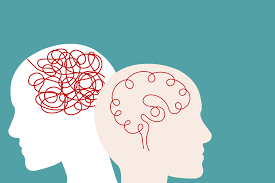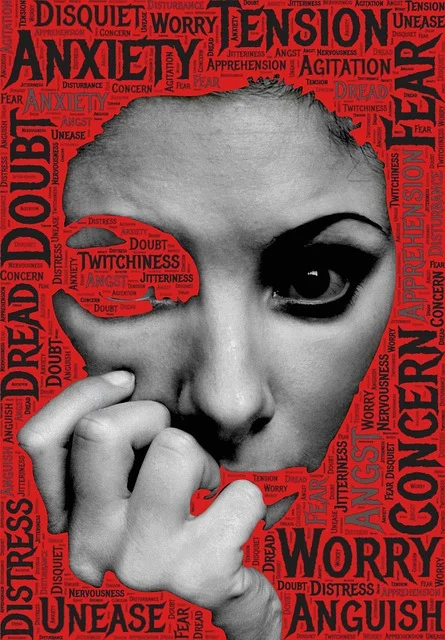Introduction
Almost everyone experiences a strange or unsettling thought that seems to come out of nowhere. It might be an image of accidentally shouting in a quiet room, the sudden idea of steering your car off the road, or an unwanted memory from the past. These are called intrusive thoughts—unwelcome mental experiences that can feel shocking, disturbing, or confusing.

While intrusive thoughts are common, for some people they become overwhelming, repetitive, and tied to anxiety or mental health conditions. Understanding what intrusive thoughts are, why they happen, and how to manage them is essential for improving mental well-being. This article explores intrusive thoughts in depth, covering their causes, symptoms, and effective coping strategies.
What Are Intrusive Thoughts?
Intrusive thoughts are unwanted and involuntary thoughts, images, or urges that suddenly enter your mind. They often feel out of character and can cause distress because they clash with your values, beliefs, or sense of self.
Examples include:
- Thinking of shouting something inappropriate during a serious conversation.
- Imagining harm coming to a loved one.
- Having an unwanted sexual thought about someone.
- Replaying a past mistake or traumatic event.
The key feature of intrusive thoughts is that they feel invasive—you didn’t choose them, and you may wish they would go away immediately.
Types of Intrusive Thoughts
Intrusive thoughts can vary widely. Here are the most common categories:
1. Harm-Related Thoughts
- Fear of accidentally hurting someone.
- Sudden urges to do something dangerous (like swerving a car).
- Worry about losing control and causing harm.
2. Fear-Based Thoughts
- Imagining worst-case scenarios (e.g., losing your job, being humiliated).
- Catastrophic thinking about health, finances, or relationships.
3. Sexual Intrusive Thoughts
- Unwanted sexual images or urges.
- Thoughts that go against personal values or preferences.
4. Religious or Moral Intrusive Thoughts
- Blasphemous thoughts that conflict with beliefs.
- Fears of being morally corrupt or unforgivable.
5. Health-Related Intrusive Thoughts
- Constant fear of having a serious illness.
- Repetitive worries about contamination or disease.
Causes of Intrusive Thoughts
Intrusive thoughts don’t appear out of nowhere. They are often connected to underlying conditions or stressors.

- Anxiety Disorders – High anxiety levels make the brain hyper-alert to potential dangers, leading to repetitive, fearful thoughts.
- Obsessive-Compulsive Disorder (OCD) – Intrusive thoughts are a hallmark of OCD, often paired with compulsions to neutralize them.
- Post-Traumatic Stress Disorder (PTSD) – Trauma survivors may relive distressing memories as intrusive thoughts or flashbacks.
- Depression – Negative thought loops and feelings of hopelessness can manifest as intrusive ideas.
- Stress and Fatigue – Overworking the mind makes it harder to filter random thoughts, so unwanted ones slip in more often.
Symptoms and Signs of Intrusive Thoughts
While everyone has occasional strange thoughts, intrusive thoughts become a concern when they:
- Occur frequently and repetitively.
- Cause significant distress or guilt.
- Interfere with daily functioning.
- Trigger compulsive behaviors (e.g., checking, seeking reassurance).
- Make you doubt yourself or your morality.
A person struggling with intrusive thoughts might spend hours trying to suppress them, leading to exhaustion and frustration.
Are Intrusive Thoughts Normal?
Yes, intrusive thoughts are extremely common. Studies show that nearly everyone experiences them at some point. The difference lies in how people respond:
- For some, they’re fleeting and dismissed.
- For others, especially those with anxiety or OCD, they stick, replay, and spiral into worry.
The presence of intrusive thoughts does not mean you agree with them or will act on them. In fact, their disturbing nature usually means the opposite: they conflict with your values.
How to Manage Intrusive Thoughts
While intrusive thoughts can feel overwhelming, there are effective ways to manage them:
1. Acceptance Instead of Suppression
Trying to force intrusive thoughts away often makes them stronger. Instead, acknowledge the thought and allow it to pass without judgment.
2. Cognitive Behavioral Techniques
- Label the thought: “This is just an intrusive thought.”
- Challenge its validity: Ask, “Is there real evidence for this?”
- Redirect attention: Focus on a task, hobby, or grounding technique.
3. Mindfulness and Meditation
Practicing mindfulness helps you observe thoughts without attaching meaning or fear to them. Breathing exercises, guided meditations, and body scans are helpful.
4. Journaling
Writing down intrusive thoughts can reduce their power. Over time, patterns may emerge that reveal underlying stressors.
5. Grounding Exercises
Simple methods like focusing on physical sensations (touch, sound, sight) help shift the mind away from distressing thoughts.
Intrusive Thoughts in Mental Health Disorders
Intrusive Thoughts and OCD
OCD often traps people in a cycle: intrusive thought → anxiety → compulsion. For example, someone fears contamination (intrusive thought), feels anxious, and repeatedly washes their hands (compulsion).
Intrusive Thoughts and PTSD
Flashbacks and vivid intrusive memories are common in PTSD, often triggered by reminders of trauma.
Intrusive Thoughts and Anxiety Disorders
Generalized anxiety can turn fleeting thoughts into constant worry.
Intrusive Thoughts and Depression
Depression can amplify negative self-talk, making intrusive thoughts feel more believable.
When to Seek Professional Help
It’s time to consult a professional if:
- Intrusive thoughts are constant and distressing.
- They interfere with work, school, or relationships.
- They trigger compulsive behaviors.
- They cause feelings of hopelessness or guilt.
Mental health professionals can provide accurate diagnosis and treatment tailored to your needs.
Treatment Options
Treatment depends on the underlying cause but often includes:
- Cognitive Behavioral Therapy (CBT) – Helps identify and reframe distorted thought patterns.
- Exposure and Response Prevention (ERP) – Particularly effective for OCD-related intrusive thoughts.
- Medication – Antidepressants or anti-anxiety medications may reduce thought intensity.
- Supportive Therapy – Talking with a trained therapist provides coping tools and emotional relief.
- Lifestyle Adjustments – Exercise, good sleep hygiene, and stress management reduce vulnerability to intrusive thoughts.
Daily Practices to Reduce Intrusive Thoughts
- Get enough sleep to maintain mental clarity.
- Limit caffeine and alcohol, which can worsen anxiety.
- Exercise regularly to release stress and improve mood.
- Practice relaxation techniques like yoga or deep breathing.
- Stay socially connected to prevent isolation and overthinking.
Myths About Intrusive Thoughts
- Myth 1: Having intrusive thoughts means you secretly want to act on them.
- Truth: Intrusive thoughts are the opposite of your true desires.
- Myth 2: Only people with mental illness have intrusive thoughts.
- Truth: Everyone experiences them occasionally.
- Myth 3: Intrusive thoughts can be completely eliminated.
- Truth: The goal is not elimination but learning to manage and reduce their impact.
Conclusion
Intrusive thoughts may feel frightening or confusing, but they are a common part of human experience. For many, they are harmless mental glitches that pass quickly. For others, especially those with anxiety, OCD, PTSD, or depression, they can become overwhelming.
The good news is that intrusive thoughts can be managed. With self-awareness, coping strategies, and professional support when needed, you can reduce their power and regain control of your mental well-being.
Remember: you are not your thoughts, and having intrusive thoughts does not define who you are.



